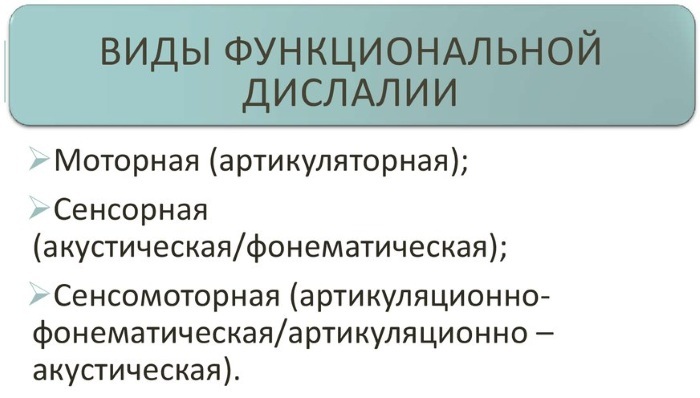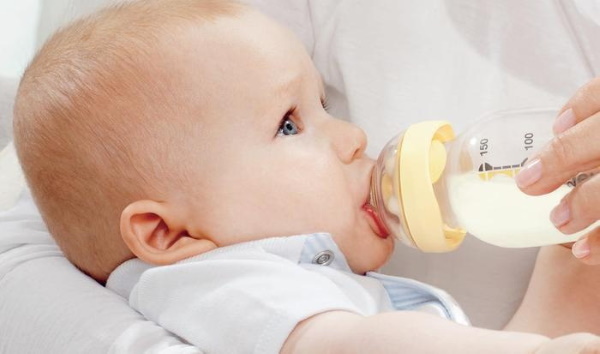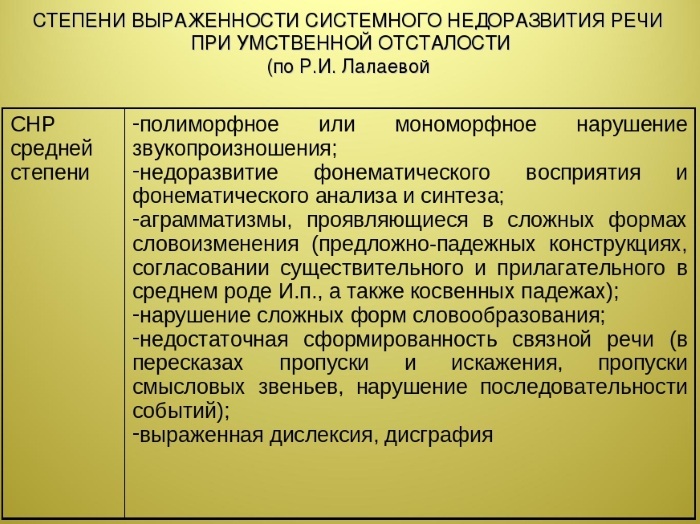Rubella - contagious disease with acute onset that occurs mainly in children and characterized by specific symptoms - fever, rash, lymphadenopathy. Man quite susceptible to the pathogen, especially between the ages of 2 and 4 years. Contagious is not only symptomatic patients, but the virus carrier.
The content of the article:
- 1 Features and mechanisms of disease development
- 2 The first signs
- 3 What is rubella: photo
-
4 Symptoms of rubella in children
- 4.1 A typical form of acquired rubella
- 4.2 Atypical form of acquired rubella
- 4.3 congenital rubella
- 5 Unlike measles rubella and scarlet fever
- 6 incubation period
- 7 Features of rubella in children under one year
- 8 possible complications
- 9 What tests carried out at a rubella?
- 10 Rubella Treatment in Children
-
11 medications
- 11.1 Folk remedies
- 12 Do I need to follow a special diet?
- 13 Vaccination and the side effects that may occur as a result of vaccination
- 14 Frequently Asked Questions
- 15 Video of rubella in children
Features and mechanisms of disease development
The etiological agent of the infection is an RNA genome rubivirus, belonging to the family Togaviridae, similar to the bark-fired agent. Humans can be infected only by the airborne human mechanism.
Ill or simply carrier infectious virus in the final week of phase predbolezni (incubation period) and for a further 3 or 4 days from the start of the first rash. Rubella virus virtually stable in the environment, its destruction occurs at high temperatures, the action of UV rays, at the same time the pathogen is long preserved under freezing.
It has a tropism for epithelial, nervous, and fetal lymphoid tissues, which explains the main clinical manifestations of the disease.
Once in the human organism, the virus is adsorbed on the epithelium of the respiratory tract mucosa, and then, breaking hematological barrier into the blood. Developing viremia (virus particles circulate in the bloodstream), due to which the infected lymph nodes. Replication of the virus leads to the development of lymphadenopathy.

In response to the massive proliferation of infections in the body begins to synthesize antibodies to combat viral particles. The first eruption evidence of their appearance in the blood and the end of viremia phase.
Also acquired form of the disease is isolated congenital rubella. Infection with this form embryo transplacental occurs and leads to severe congenital anomalies often incompatible with life.
Allocate 4 clinical period of the disease:
- Incubation (average 16 days);
- Prodrome (hours);
- Height of the disease (up to 3 days with fever, rash unexpressed and rhinitis);
- Recovery.
The first signs
Rubella in children whose symptoms occur in an average of 2 weeks from contact with an infected person is different in different manifestations.
They are as follows:
- Acute onset - usually low-grade fever (rarely up to 38aboutFROM);
- Catarrhal syndrome - profuse rhinorrhea, sneezing, cough without sputum, soreness in the throat;
- Melkopyatnistoy exanthema;

Rubella in children begins with melkopyatnistoy exanthema. This is the first symptoms and treatment must begin immediately, without delay. - Increase rear lymph nodes (neck and neck).
The latter feature is particularly typical of the disease. On average, 5 days before the appearance of exanthema and after 2 weeks lymph nodes are enlarged. In this case, palpation is often extremely painful.
What is rubella: photo
A distinctive feature of the disease is a rash. It applies during the first day (less often during the first 2 days) fast enough, thus there is a sensation of simultaneous eruptions across the skin. However, with rubella exanthema characterized by the sequence of podsypany.
The rash spreads from top to bottom, covering the first face, behind the ear, scalp, and then falls on the trunk and limbs. Especially abundant elements coated surface flexion joints, back and buttocks. Her hands and feet at the same time remain clean.
In most patients rash of small size, it is represented morphologically spot. Only 5% of elements reach 10 mm and are considered large. Even rarer maculopapular rash. The shape of the elements of round or oval, pale pink, not prone to fusion.

Rash is located on the unchanged skin, does not rise above it. When diascopy stain fades, or even disappear, which indicates its inflammatory nature.
Already on day 1 of the disease rash appears on the mucous membrane of the soft palate in a dimly expressed enantemy (Forchheimer spots).
Duration exanthema syndrome is an average of 2-3 days. Pass the rash completely, leaving no trace in the form of pigmentation and scaling.
Symptoms of rubella in children
By the time of occurrence of rubella is divided into two versions - innate and adaptive. In turn, acquired the disease is divided by the river in the typical and atypical forms.
A typical form of acquired rubella
This form of pathology is a classic case scenario. According to the severity of clinical course of rubella divided into mild, moderate and severe. By the presence of complications sometimes - complicated and uncomplicated.
Uncomplicated typical rubella is fairly easy nature of the flow and is characterized by:
- incubation period of 11 to 22 days;
- lymphadenopathy about 5 or 6 days before clinical manifestations;
- onset, usually without prodrome (occasionally possible slight discomfort, cephalalgia);
- first manifestations in a typical melkopyatnistoy, with the characteristic rash roseolous phasing rashes;
- in the presence of fever exanthema period to 3-4 days (figures up to 38-39aboutFROM);
- enantemy presence in the mucous.

In addition to the rash typically occurring rubella feature is the catarrhal syndrome. In the overwhelming majority of cases (about 90%) it appears pharyngitis, often combined with a cold (average 70%). Ill often complain about the presence of dry cough unpleasant sensations rawness and sore throat.
Atypical form of acquired rubella
Symptoms of atypical forms of measles in children is scant.
Of the clinical manifestations of note:
- minor inflammation in the airway mucosa;
- moderately pronounced increase in lymph nodes;
- the absence of lesions.
The diagnosis of this form of the disease plays a decisive role fact of contact with an infected person. Especially it is necessary to know the diagnosis of rubella in pregnant women.
congenital rubella
disease during in utero significantly different from its purchased form. For congenital rubella pathognomonic triad of symptoms (Gregg triad - the author who first described this, the most frequently occurring set of manifestations of the disease in utero).
This includes cataracts, deafness and a variety of cardiac malformations (ventricular septal defects, imperforate absence of the ductus arteriosus and pulmonary damage in the form of stenosis). But often among "typical" manifestation of congenital rubella dressed and others (ie. n. "Expanded" triad).

These include other eye damage, central nervous system diseases, blood, heart, musculoskeletal system:
- cataract, retinopathy, eye hypoplasia (microphthalmia), inflammation of the choroid;
- mental retardation, developmental delay;
- thrombocytopenic purpura;
- hepatosplenomegaly;
- myocarditis;
- a variety of bone loss.
Unlike measles rubella and scarlet fever
Etiological agents of measles and rubella are quite similar to each other, which causes similar diseases clinic. This is especially true of the incubation and prodromal period - the beginning of an average of 10-20 days of contact with an infected person, as a prodrome slight intoxication syndrome.
The differences become apparent from the first clinical manifestations. Measles at the forefront catarrhal syndrome, whereas when it is expressed rubella and slightly inferior to the degree of manifestation of the syndrome exanthema. Pharyngitis and rhinitis in measles quite often associated with conjunctivitis.
Pathognomonic symptom of measles is the presence of spots Belsky, Filatov-Koplik. These are small, grayish-white spot lesions, hyperemic rim framed. They are located on the inside of the cheeks against the small molars. Appear a day before the eruption, do not tend to merge, are not removed when scraping spatula.

Represent a necrosis of the mucosal epithelium. There are spots up to 3 days. The main differences concern the stage of the rash.
By the difference of rash in measles include the fact that it:
- there is a 3-4 day from the beginning of the disease on the background of repeated rise in temperature;
- maculopapular, it tends to merge;
- It spreads for 4 days from the top down, starting with the scalp;
- available on all the oral mucosa and not only on the soft palate as with rubella;
- passes in pigmentation and defurfuration in its outcome (not simultaneously, but similar to the embodiment appearance - from head to extremities).
Duration period exanthematous measles is about 1.5 weeks versus several days at rubella. Other differences include the lack of measles or less pronounced lymphadenopathy.
incubation period
Rubella in children, the symptoms of which were discussed above, begins 2-3 weeks after contact with an infected person. The time interval between the entrance of infectious agents into the body and the first manifestation of the disease is called the incubation period.
During this time, the multiplication of virus particles in the lymph node, entering into the blood after a week, where production of protective antibodies occur in the future.
Features of rubella in children under one year
Rubella is considered a disease of childhood period. As a rule, children can get sick with her 2 years. The first year of a child's life protecting antibodies which fell to him at birth by his mother, so many pathologies he malouyazvim.
Children up to 1 year in most cases suffer from congenital rubella. Clinic disease presented the classic triad Gregg. In addition, the possible presence of hydrocephalus, entsefolopatii.

If a pregnant woman suffered illness after the completion of organogenesis of the fetus, the clinical picture is characterized by fetopathy in the form of hemolytic anemia, hemorrhagic syndrome on the background of thrombocytopenic purpura, liver disease, bone (open fontanelles, cleft palate, and others), in the form of interstitial lung pneumonia.
Somewhat later, it can be detected and other defects, because it is often in the first few months of life set all pathology is not possible.
Children are born with congenital rubella with insufficient body weight and small stature (mikrosomatichesky type of physical development). Often lag behind in physical and mental development. Within six months, most of the symptoms may disappear, except for severe anomalies and defects.
possible complications
Complications of rubella in children are rare, and usually these symptoms are caused by the addition of a secondary infection. But there are also specific complications.
These include:
-
The defeat of the joints as arthritis - it is more common in girls, on average one week after the rash is characterized by swelling and erythema of the skin in the affected area, the pain. Symptoms disappear within a week.

- CNS side effects - affects the brain membranes, spinal cord and brain substance. Clinically manifest meningoencephalitis, encephalomyelitis and panencephalitis. Developed for 5 hours, starting with a re-occurrence of fever and cerebral and focal symptoms.
What tests carried out at a rubella?
To establish a diagnosis of rubella requires a set of clinical and epidemiological data: the presence of aggravated epidemiological history (or contact with diseased carrier of the virus), the typical clinical symptoms and certain changes in laboratory indicators. A special role is played by laboratory tests in the case of atypical flowing disease.
For the diagnosis of rubella are important:
- General blood and urine tests;
- Analysis of the cerebrospinal fluid, if there is suspicion of CNS;
- By indications can be applied methods electroencephalography (EEG), an electrocardiogram;
- Express diagnosis is performed using immunological methods, such as IEF (allows to detect antibodies to the infectious agent in the patient's serum);

- For longer immunodiagnostics include hemagglutination inhibition (RTG), the binding of a compliment (RAC) and other studies. At the same time we study not only the presence of antibodies, and increase their titer, which indicates active infection.
Rubella Treatment in Children
Rubella in children, the symptoms of which are considered to be quite typical for infectious disease refers to diseases causal treatment which has not yet been worked out in detail. Treatment of mild forms of the disease usually involves outpatient setting (at home), at the same time complicated course requires hospitalization.
Sending patients to the hospital is also required in the case of unsuccessful treatment in the outpatient phase, the presence of immunodeficiency, early age of the child.
Therapy rubella include:
- Therapeutic and protective regime (inpatient or outpatient setting).
- Diet (to be discussed below).
- Medical methods.

- Drug-free methods.
Treatment involves performing several tasks, which include the prevention of complications of the disease, prevention of residual symptoms. Select the method of therapy is closely related to the severity of the disease, clinical manifestations, the degree of their severity.
In the appointment of a particular therapy, first find out whether the patient is in need of antiviral and antibiotic therapy. Assess symptoms requiring arresting.
medications
All drugs that are used for rubella, are symptomatic.
That is, they are not aimed at the fight against the virus, and relief of various symptoms of the disease:
- When using hyperthermia NSAID drugs, such as paracetamol. It has antipyretic effect by blocking the synthesis of prostaglandins, reduces the ability of the excitation thermoregulatory center of the hypothalamus. Single dose for children over 6 years of age is 250-500 mg. Children under 6 years of paracetamol is contraindicated.
- In the presence of arthralgia is assigned to ibuprofen, also belonging to the group of non-steroidal anti-inflammatory drugs. A convenient form of release in the form of a gel. Children older than 6 years applied a gel strip of about 2-4 cm on the affected joint to 3 times per day.
- In the case of a hemorrhagic syndrome, as in the case of a CNS administered steroid hormonal agents - prednisolone. Treatment is carried out at the same hospital.

As causal treatment means used recombinant interferon (interferon alpha) and other immunostimulants (tilorona), but only if there is a complicated course of the disease. In the case of accession of the bacterial flora in the list of infectious drugs used antibiotics are added.
It is worth remembering that self-medicate, even in the case of mild symptoms is not necessary. The use of any drug should be strictly coordinated with the attending physician.
Folk remedies
In addition to drugs, prevent some symptoms of the disease by using the popular method. For example, a decoction of lime color will help reduce the temperature, and a decoction of the fruit of currants and rose hips strengthen the immune system.
As with other infectious diseases, rubella provides patient isolation, bed rest and drinking plenty of fluids, which can be achieved by stewed fruit, juice, vitamin tea.
Do I need to follow a special diet?
Rubella in children whose symptoms worsen the overall health of the patient, does not provide specific diet changes. When drawing up the menu to consider the child's condition, age, severity of the disease. Food should be easily digestible and nutritious.
can be isolated from clinical recommendations:
- The increased consumption of dairy products.

- The increase in fruit and vegetable menu.
- Herbal teas.
- Exclusion from the diet of heavy, fatty foods and spices in the case of severe disease.
- Reducing the amount of carbohydrates.
Vaccination and the side effects that may occur as a result of vaccination
For rubella prophylaxis used active method of immunization - vaccination. For this purpose, the live vaccine (atteniurovannaya), which is produced by culturing a strain of the virus in human cells.
Vaccination is carried out to persons older than 12 months once subcutaneously or intramuscularly.
Revaccination offer girls and young women of reproductive age in the absence of serological evaluation of immunity. Vaccination is contraindicated in pregnant women, and persons with immunodeficiency, malignant neoplasms.
Adverse reactions are rare in the form of increased body temperature (generally 5 days post-vaccination), allergic reactions, minor lymphadenopathy.
Frequently Asked Questions
1. Do rubella second time sick?
Usually not. Immunity, which is formed after the disease, the body provides anti-pathogen almost for life, i.e. such immunity is considered to be resistant.
2. How not to catch rubella?
There are specific and non-specific rubella prevention methods. On the first mentioned above, in the section of vaccination. For non-specific remedies include avoiding places where there may be potentially sick people, strengthening its immunity and timely access to specialists at the first sign of infection process.
3. Do rubella rash itches?
No. The rash of rubella is not scratched and does not even hurt. This is one of the basic characteristics, which allows differential diagnosis between rubella infections and other exanthematous.
4. How much is to keep the child in isolation?
Dates isolation of the patient depends on the timing of its contagiousness, t. E. the period during which the virus is released into the environment. When rubella risk infecting others begin 7-10 days before the clinical manifestations and persists after 2-3 weeks after the disappearance of the last element of the rash.
5. Contraindicated if water treatments with rubella?
No major contraindications for showering rubella has not. But in the case of fever, general malaise should still refrain from them and wait for more favorable conditions. But in any case, it is necessary to consult on this issue with your doctor.
6. How to check if you have endured rubella as a child?
In order to assess the intensity of immunity (ie, whether it is against the rubella virus), you should contact the immunological laboratory. There will be carried out blood tests for the presence of specific antibodies - Ig G.
7. To which the doctor ask for suspected rubella?
In the presence of rubella symptoms in children, parents should consult a pediatrician or children's infectious diseases. These specialists will clarify the diagnosis and appoint necessary treatment.
Author of the article: Valentine (anit)
Registration of the article: Lozinski Oleg
Video of rubella in children
Symptoms of rubella and treatment at home:



